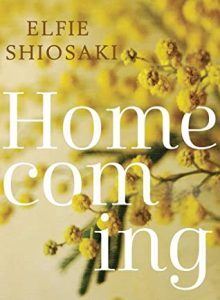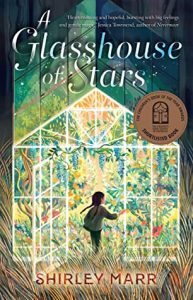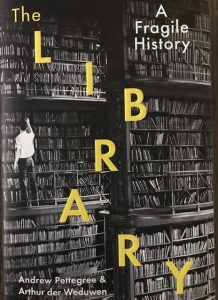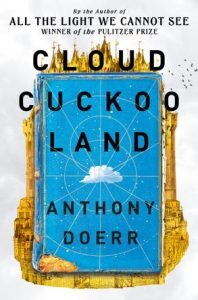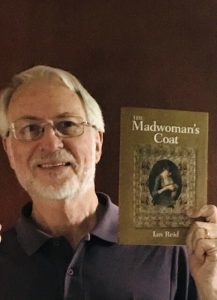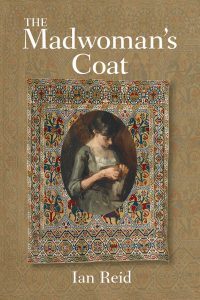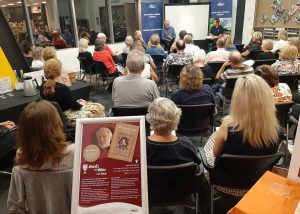Ian Reid's Blog, page 2
December 11, 2022
“Short” is shorter than it used to be
How long should a “short story” be? Old question, but one I’ve been pondering again in regard to some of my own published fiction.
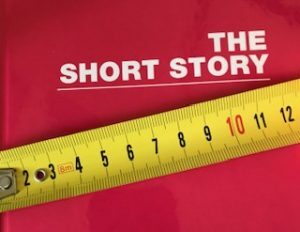 One of my pieces (“A Sinking Heart”) has just won a prize in the international Letter Review short story competition; another {“Listing”) was a finalist for the recent Armadale Writers Award; and another (“I dispettosi amanti”) has now appeared in the anthology Snatches of an Aria. These vary in length from just over 400 words to just under 2500.
One of my pieces (“A Sinking Heart”) has just won a prize in the international Letter Review short story competition; another {“Listing”) was a finalist for the recent Armadale Writers Award; and another (“I dispettosi amanti”) has now appeared in the anthology Snatches of an Aria. These vary in length from just over 400 words to just under 2500.
“A Sinking Heart,” approx. 1320 words, was much longer when first drafted, and only came into sharp focus after I’d gradually whittled it down until every remaining word was essential to the narrative purpose. I’m delighted that the judges of the Letter Review Prize make the following comment on this story and the other two place-getters (one by an Irish writer, one by an American):
The winning stories moved us deeply, made us smile, gave us so much to think about, and inspired us with their astonishing mastery of craft.
You can read “A Sinking Heart” here.
And “Listing,” which the Armadale award judge found “poignant and compelling,” is here.
19th-century writer Edgar Poe, a pioneer of the modern short story, said it should be capable of perusal at one sitting in order to sustain “unity of impression.” But William Saroyan, a later practitioner, remarked that some readers can sit for longer than others. These days, when most of us have a touch of ADHD, very few people seem able to immerse themselves in a fictitious prose narrative without keeping a distracted eye on the time. So, catering for a fidgety society, stories have generally become shorter. Not a bad thing if it leads to more concise writing. The revision process for one of mine, “Promises,” brought it down from about 3500 words to 2000 — the form in which it was published in Backstory a few months ago — and that cropping strengthened its impact, I think. You can read it here.
Most contemporary novels now look skinny compared with those written a century ago — or would, if their actual slimness wasn’t disguised by large fonts and wide-spaced lines. Short stories, too, are shrinking. Many literary magazines and prize competitions now tend to favour “flash fiction,” a term that has been around for about 30 years to designate extremely short stories and has proved especially popular in online publications. But how short is “extremely short”? Editors usually stipulate a maximum word count for these micro-narratives: sometimes 500 words, sometimes 200, sometimes even less.
The shorter it is, the more likely to be read as closely as a poem — or so its author hopes! One of mine, “Cured,” published in Flash Frontier, is under 150 words and aims at a quasi-poetic compression: here it is.
The post “Short” is shorter than it used to be appeared first on Reid on Writing.
September 12, 2022
Shortlisted
It’s nice to find yourself on a shortlist. But lists, short or long, signify quite different things in different contexts.
If you apply for a job and get shortlisted, you can expect an interview — with a good chance of being selected for the position. Recruitment agents will have previously included you on a longer list of possible contenders, though you probably won’t know about that earlier deliberative stage.
It’s a purer process if you submit something you’ve written for a literary award. ‘Purer’ in the sense of being less affected by bias, because usually what’s being evaluated in such cases isn’t the author but the particular composition — story, poem, or whatever — and a ‘blind’ judging is normal. That is, the person or panel making the decisions doesn’t know who the author of any entry is until afterwards.
Having in the past been longlisted, shortlisted and occasionally emerged as a winner for literary prizes, and having at other times been a member of judging panels, I appreciate this conscientious process of focusing on the quality of the piece of writing. Of course subjectivity is still involved in any judging.
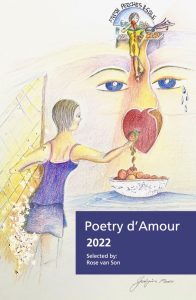 I’ve just learnt that one of my poems is on the shortlist for the 2022 Poetry d’Amour award. There are six other poets (from several parts of Australia) on the shortlist, so it’s of similar size to the longlist that included my novel The Madwoman’s Coat for last year’s ARA Historical fiction Prize.
I’ve just learnt that one of my poems is on the shortlist for the 2022 Poetry d’Amour award. There are six other poets (from several parts of Australia) on the shortlist, so it’s of similar size to the longlist that included my novel The Madwoman’s Coat for last year’s ARA Historical fiction Prize.
The Poetry d’Amour prize will be announced, and an anthology containing all the longlisted entries will be launched, at an event on 2nd October during the Perth Poetry Festival.
Copies of the anthology can be pre-ordered here.
The post Shortlisted appeared first on Reid on Writing.
June 17, 2022
Apples, oranges and literary awards
Comparing like with like is a relatively simple evaluative task. But that’s not what faces the judging panel of some competitions.
As a judge for the 2021 Western Australian Premier’s Book Awards, it was with mixed feelings that I sat through last night’s announcement and celebration of the winners at the State Library.
Of course I’m delighted that the shortlisted contenders in each category were so variously meritorious, and I admire in particular the work of those who emerged with the glittering prizes. The public recognition that these awards attract is enormously encouraging for writers.
But once again (for this isn’t the first time I’ve been a member of this kind of panel) I felt misgivings because it’s inevitably a matter of choosing between apples, oranges and a mélange of other literary fruit. Even within a category such as Writing for Children, we had to rank picture books for the very young in the same list as sophisticated novels for pubescent readers. The Emerging Writers category, too, required us to appraise works that are generically quite different: they ranged from collections of poetry to family histories, from historical fiction to novels with contemporary settings … and so on. Hardly commensurable!
However, I was impressed by the conscientious and thoughtful way in which the panel members engaged with this challenging diversity of texts and exchanged impressions harmoniously with one another during our meetings. In all, the deliberative decision-making process took several months.
Thank you to my estimable fellow judges: Rashida Murphy (an excellent chair), Jay Lachlin Anderson, Liana Joy Christensen, Michelle Michau-Crawford and Josephine Wilson.
And warm congratulations to all the following shortlisted writers:
David Allan-Petale, Locust Summer
Elfie Shiosaki, Homecoming (category winner)
Cindy Solonec, Debesa
Emily Sun, Vociferate
Josephine Taylor, Eye of a Rook
James Foley, Stellarphant
Steve Heron, One Thousand Snapshots
Denis Knight & Cristy Burne, Wednesday Weeks and the Tower of Shadows
Shirley Marr, A Glasshouse of Stars (category winner)
Katie Stewart, Where Do the Stars Go?
Writers’ Fellowship [project]
Nandi Chinna (category winner) — Poetry
Julia Lawrinson — Memoir
Caitlin Maling — Poetry
John Mateer — Poetry/Prose/Fiction
David Whish-Wilson — Travel memoir
The post Apples, oranges and literary awards appeared first on Reid on Writing.
April 7, 2022
The resilience of libraries
In recent weeks, Russian barbarity has damaged or destroyed many libraries in Ukraine — along with hospitals, schools, universities, and residential areas. But the librarians of this battered nation have risen to the challenge. Libraries that are still standing are “buzzing like hives” day and night, according to the President of the Ukrainian Library Association.
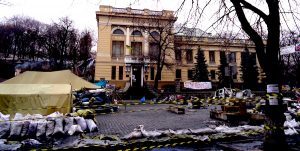
Barricades protect Ukraine’s National Parliamentary Library. (Source: IFLA)
Some have become neighbourhood bomb shelters or field hospitals. Some have organised practical support for military defence, such as weaving camouflage nets. As far as possible, all are continuing and even extending their traditional functions. They are not only providing reading material for the families sheltering in libraries but also packaging books for transfer to adjacent countries where huge numbers of Ukrainian refugees are now arriving. And a particular focus is on actively countering the disinformation that runs rife in times like these.
The resilience of libraries in Ukraine is the latest episode in a long and fascinating story of devotion to civilised values by the keepers of institutionalised literary knowledge in the face of formidable challenges.
I’ve just finished reading two books that remind me how extraordinarily durable and adaptable, over many centuries, book-centred establishments of one kind or another have been. The Library: A Fragile History, by Andrew Pettegree and Arthur der Weduwen, traces permutations of this cultural phenomenon from ancient times to the present day. Cloud Cuckoo Land, by Anthony Doerr, is an inventive work of fiction written (as the author puts it in an appendix) “to show how a book survives through time, both because of human technologies and because of human stewards.” In their different ways these two substantial volumes (over 500 pages each) are inspiring tributes to the ideals that libraries exist to cherish.
Pettegree and Weduwen record in great detail the long development of the library from ancient collections of clay tablets and papyrus scrolls to parchment codices, from small hoards of unique manuscripts to huge assemblages of printed books … and so on, through countless vicissitudes, up to the emergence of public libraries in the 19th century and our 21st-century information hubs dominated by digitally disseminated texts.
As this comprehensive chronicle’s subtitle emphasises, the ability of book repositories to survive has always been fragile: they have often faced the ravages of natural events — from insidious incursions of mould, rot and vermin to sudden accidental disasters like fires, floods and earthquakes — as well as the depredations of thieves, plunderers, censors (political or religious), book burners and warmongers.

The library of Holland House, London, after a bombing raid in 1940. (Source: UK Gov’t)
The two 20th-century world wars devastated countless European public collections across Europe. Priceless literary treasures were lost — bombed to smithereens, stolen by opportunists, cancelled by ideologues.
In Britain the Blitzkrieg of WW2 wiped out the complete library book-stock of city after city; in a matter of days, more than a million books perished in Exeter alone, for instance.
On the other hand, a few memorable wartime images testify also to lucky escapes for some libraries and a keep-calm-&-carry-on stoicism on the part of their custodians and users, as in a famous photo of readers imperturbably browsing shelves in the ruins of Holland House.
Anthony Doerr’s Cloud Cuckoo Land is dedicated to “librarians then, now and in the years to come,” and its acknowledgements page includes the author’s “thanks to every librarian who helped me find a text I needed or didn’t yet know I needed.”
It’s an elaborate fictional work, a great feat of imagination and narrative ingenuity that sweeps through history from the heyday of classical Greece to an imagined future in which human initiative is almost subordinate to the dictates of artificial intelligence. The latter has become the controller of a purportedly infinite library of information – yet it turns out that this cannot meet all emotional needs, and so one resistant human, a young girl, secretly creates a personal library of her own, thus linking her situation to a chain of earlier storytellers. Similarly spirited, but at quite different points in time and place, several other youthful characters in this novel manage to defy the destructive and repressive forces around them with enough resourcefulness to ensure the transmission of an ancient text through centuries of hazard.
Attached to the end of this novel is a conversation with the author in which he salutes the fact that the world’s oldest extant stories have reached us only because they were conscientiously preserved and copied over many centuries in imperial, monastic and private libraries. Long live books, their creators and their custodians!
The post The resilience of libraries appeared first on Reid on Writing.
November 22, 2021
Between books
When a book appears in print, its author can bask momentarily in the satisfying afterglow. BringIng a full-length writing project to fruition will usually have taken years of hard labour, so one feels entitled to savour the pleasures of publication. But not for long. The OCD component of a writer’s temperament doesn’t permit much lounging around. A prospective next book may already be starting to make urgent demands, and in any case other ideas will probably have begun to bubble into words.
So what does the writing life look like between books? It’s a busy mixture of activities, I’ve always found. Post-publication events continue for some while in response to invitations from various groups. And the habit of writing doesn’t subside.
In the nine months since the release of my fifth novel, The Madwoman’s Coat, I’ve given nearly 30 talks that are directly or indirectly linked to it. Most of the venues are libraries, clubs or community centres. Another of these presentations, illustrated with an assortment of screen images, is coming up soon and is open to the public: details here. More sessions are already being scheduled for next year.
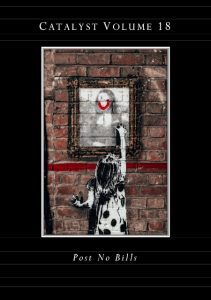 Meanwhile I’ve been continuing to write productively, with a current focus on short fiction and poetry.
Meanwhile I’ve been continuing to write productively, with a current focus on short fiction and poetry.
Some of my poems have recently come out in Australia (in Burrow, Cordite, Creatrix), others overseas (in Shot Glass and Catalyst).
One of my short stories is shortlisted for the Southern Cross Prize, another is due out very soon in Backstory, and a short-short has just been published in the NZ magazine Flash Frontier.
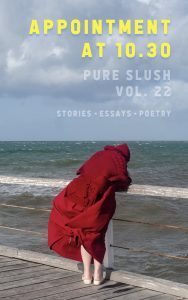 In addition, accepted items will appear within the next few weeks, e.g. in Pure Slush (a special issue on the theme “Appointment at 10.30”, with a striking cover image) and Quadrant.
In addition, accepted items will appear within the next few weeks, e.g. in Pure Slush (a special issue on the theme “Appointment at 10.30”, with a striking cover image) and Quadrant.
Several more poems are currently under consideration by various magazines. What would we do without all those labour-of-love literary periodicals to provide platforms for our work?
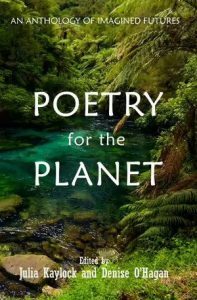 I’m also delighted to be included in the handsome just-released book Poetry for the Planet: An anthology of imagined futures.
I’m also delighted to be included in the handsome just-released book Poetry for the Planet: An anthology of imagined futures.
Carefully edited by Julia Kaylock and Denise O’Hagan and published by Litoria Press, this brings together poems by scores of Australian and NZ writers united by a concern for our physical environment.
You can purchase a copy here.
So the writing life goes on steadily between books. Perhaps my own next book-length publication will be a collection of short fiction or poetry.
The post Between books appeared first on Reid on Writing.
September 19, 2021
Virtual Conferenceville
In years gone by I’ve been to countless conferences. Haven’t we all? But a big upcoming event organised by the Historical Novel Society of Australasia, for which I’m an invited speaker, will be different from those past occasions.
It’s a virtual event, taking place in what you might describe as ‘an infinite sphere, whose centre is everywhere and whose circumference is nowhere.’ (Actually that’s a medieval definition of God, but it seems to fit the case!)
Long before anyone could envisage what a virtual conference might be, Australian author Frank Moorhouse depicted a typical talkfest forum of the traditional sort in his amusing book Conferenceville. Back then (1976), it seemed obvious that the raison d’être of any colloquium was face-to-face interaction, even when (like Moorhouse’s narrator) an attendee wasn’t sure whether direct contact would eventuate:
‘I found my way to a seat in the empty auditorium…
I wondered who would sit with me…’
That was conferenceville 45 years ago. Since then our world has changed utterly — especially since the pandemic curtailed our face-to-face interactions.
This HNSA virtual conference is not, of course, the kind of where researchers present formal papers on esoteric topics, nor the kind where people gather earnestly to make Important Policy Decisions. It’s really a literary festival, featuring diverse writers linked by a common interest in stories that imagine the past. And because its program is unimpeded by geographical constraints, this ‘online celebration of one of the world’s most popular genres’ (to quote the HNSA conference website) will include an unusually large number of participants from several countries.
I’m delighted to be taking part in a panel session chaired by HNSA Director Elisabeth Storrs on the subject of “Show and Tell: Weaving a Story around a Treasured Possession.” My novel The Madwoman’s Coat, longlisted for the ARA Historical Novel Prize, lends itself well to discussion of that topic. Details here.
The post Virtual Conferenceville appeared first on Reid on Writing.
September 7, 2021
In excellent company: ARA Historical Novel Prize
To find one’s own novel in a select group of contenders for a major literary award is immensely gratifying.
The longlist for the ARA Historical Novel Prize has just been announced, and my book The Madwoman’s Coat is on it.
This ARA award provides the most significant prize purse for any genre-based literary prize in Australasia. In total it bestows $100,000 in prize money, including a first prize of $50,000. Books by any writers resident in Australia and NZ are eligible.
There’s a wonderful sense of public affirmation in being longlisted for such a prestigious award. My book rubs shoulders with novels by such highly esteemed writers as Kate Grenville, Gail Jones and Steven Conte. You can see the list here.
Beyond the immediate sense of personal pleasure, it’s also exhilarating to be associated with the ARA Historical Novel Prize because of what it stands for: it celebrates the great value of imaginary time-travel. Too much contemporary fiction seems cramped within the here-and-now, tending to reinforce current attitudes and assumptions. By inventing characters and episodes set within a well researched framework of times past, authors of the best historical novels can help readers to see aspects of our own world from a new perspective. That’s what the ARA award recognises.
Though I may get no closer than this to the prize, the longlisting still puts me in respectable company. Among last year’s finalists who missed out at the end were several notable authors including Christos Tsiolkas, Pip Williams and Tara June Winch.
The winner will be announced next month during the 2021 virtual conference of the Historical Novel Society of Australasia. As the conference is being hosted online, HNSA has been able to create its most extensive conference program to date, with panels, interviews, workshops, and more. Recorded sessions will remain accessible to registrants for three months after the event. I’m to be part of a panel for the last session before the final Plenary on Sunday 24 October. I’ll post details nearer the time.
The post In excellent company: ARA Historical Novel Prize appeared first on Reid on Writing.
July 21, 2021
The value of loyal readers
If you google “reader loyalty” you can find plenty of online data. You’ll learn that “only 3.8% of readers are loyal, but they consume 5 times more content.” Or you’ll be told publishers have discovered the importance of loyalty because it “drives economic success.” But such breathless revelations belong to the world of digital commerce, where “publication” means website advertising and “readers” are merely website visitors.
For an author, reader loyalty has a different kind of value. It’s about the immense encouragement received from individuals who not only read each successive book that one writes but also respond personally by sending spontaneous messages of appreciation. Some of these unsolicited comments are brief; some are copious. Some may be from close friends; in other cases the bond is just a shared enthusiasm for literary storytelling.
As review space in newspapers and magazines continues to shrink, thoughtful comments that come directly from reader to writer are all the more valuable, especially when they reflect knowledge of the writer’s other work as a context for each new book.
Not long after the launch of my latest novel, an uplifting email arrived from fellow writer Nicholas Hasluck, who knows my earlier fiction well.
I have just finished reading The Madwoman’s Coat and am writing to congratulate you on having completed a memorable work. The first few scenes at Fremantle in 1897 are compelling. I was immediately captured by the presence of various mysteries to be fathomed, including not only the motive and the underlying cause behind the death but also the creation and meaning of the embroidered coat. It was then very pleasing to be drawn further back to the lives of the principal characters in England and the aspirations of Lucy/Isabella and those around her such as William Morris and his acolytes. Thereafter, the various links in the chain of causation were skilfully fitted into place, leading on in due course to the dire events in Guildford and Fremantle.
As the story proceeded I felt constantly rewarded by the presence of the various elements to be found in the best works of fiction. The style, as in your other novels, was consistently graceful throughout and perfectly suited to the era and social settings portrayed. The mood thus created, a mood of elation at times, but also of desperation, especially towards the end, kept me in suspense along the way. In doing so, it pointed to and eventually accomplished a powerful resolution of the drama.
I feel instinctively that The Madwoman’s Coat is in the first rank. It is a fine novel and should be widely praised.
Soon afterwards, this cheerful message came from a former colleague, Prof Helen Wildy, who had expressed enthusiasm about each of my previous novels in turn and initiated book group discussions of several of them:
Is this your best ever? I think so, totally captivating, wonderful background stories all knitted (sorry, embroidered) together, and a lovely Icelandic saga underlying it all.
American literary critic Edith Moore has written to me at length about each of my novels as they have emerged. She reads closely and discerningly. Her extensive remarks on The Madwoman’s Coat are very gratifying:
Thank you for this wonderful and extraordinary novel! The focus on women’s perspectives is an inspiration, because it is a story of resistance and not of submission to fate. In the midst of trauma, past and present, we have Lucy/Isabella’s fierce responses to violence and the threat of violence. So often we are frozen when violence comes at us, and if we are fierce we’re called crazy. (I was thinking of Gavin Staines in A Thousand Tongues — was his inability to speak out a response to fear of his violent father? taking as a guide his mother’s “defensive taciturnity”?) But here is Lucy whose response to panic is to fight back, against the madman in the train while all the men are frozen, against the odious Dr Oram, against poor bumbling Alice. And quick to fight in defense of her art, against Julius, against Ruth Fitch, passionate in her last moments. Not submissive, and as Lucy/Isabella insists, not to be pitied.
Sad that her protective fierceness and fear of closeness keeps her locked away from Julius who seems a gentle and perceptive man. Would she have been able to see him without fear if he’d been less physically looming? If she had been able somehow in her mind to remove his mummer’s animal mask? Her efforts to understand her “perverse slighting of Julius” are impossible without looking clearly at her father, as she is beginning to see when trying to find a “justification for her reaction to Alice — at the time only the merest inkling of an explanation” which implies she does come to understand, does finally allow the memories to come out of the shadows.
And with the coming of full memory comes the glorious embroidery of the coat, and a story of creative fire refusing to be quenched. The “sparkle and exuberance” we see when she’s with the Morris family, the fire her aunt sees in her, are subdued but not put out. So fitting that on the very day that tears a ragged hole in her spirit, she is given a gift of beauty which will allow her to make necessary repairs in her soul, what she calls her “romance” with colors, fabrics and threads, her vision of a “sunny silken world” filled with bird color, flower color, sky, “pigmentary splendor.” And with her memory fully recovered she is able to gather the power of beauty into herself to sustain her soul, as Morris said Icelanders must do in their harsh landscape. So that she can transform the terror and ambivalence of her father’s transgression, her grief at the “interwoven miseries” of Julius and Gerard, into her own design, her story seen from kestrel height, with dancing mummers tamed into heraldic forms, and the image of Lucy at the center in control of the stag, made harmless with his antlers caught in Aesop’s blossoming tree. And couldn’t help but wonder if the silk mill is productive again.
When the magnificent parrot, image of beauty of freedom, flies into the room where the inquest is held and crashes into a window, the people flinch, and then forget. We can’t help but flinch when each new violent blow comes, but we don’t forget! Lucy says “in our art” there are “no illusions of permanence,” but as Tilly says, the artistry of the coat is “remarkable and lasting.” As is this beautiful novel.
Heartening comments have come from other places overseas as well, including the following from a loyal Danish reader, Dorte Huerlin:
Much to the reader’s satisfaction, Detective Inspector Rowe disentangles the yarn at the end, exposing poor Lucy/Isabella’s murderer. His own dramatic story was told, of course, in The Mind´s Own Place, also set in the Perth area. You fuse imagined lives with meticulously correct historical and geographic facts in a way I would call luxurious, Ian!
It must be so rewarding to dig into history in this way. You have the enviable talent and perseverance to carry out what I can only fantasize about… By far the best way of studying the past is empathising via narrative — your novels open the eyes of your readers to all the myriad individual destinies that founded modern Australia and New Zealand…
Lucy’s decoration of her coat becomes symbolic of a new type of male and female unison: the heavy gentleman’s overcoat, no doubt tailored according to the original military style of such garments, is softened by the imaginative decorative powers of Lucy, the craftswoman.
And Melbourne-based Dr Michael Stanford, another person familiar with my previous books, made these comments about his experience of reading The Madwoman’s Coat:
I thought you were pretty courageous as a man writing a central female character but this worked well. One could only have sympathy for her plight throughout, even combined with mixed feelings about some of her behaviour…
I found myself accelerating through as the storyline became more and more gripping. I genuinely think this novel ought be picked up as a TV series or even movie because of its many interesting themes.
The combination of women’s place in society (and in the end victimhood), history, arts, two countries, treatment of mental health, the injustice of the legal system, love and death, all seems powerful to me.
A statement attributed to Ernest Hemingway asserts that “there is no friend as loyal as a book.” Still, there’s nothing more valuable to a writer, nothing more sustaining, than appreciative messages from loyal readers.
The post The value of loyal readers appeared first on Reid on Writing.
April 1, 2021
Let’s hear it for libraries
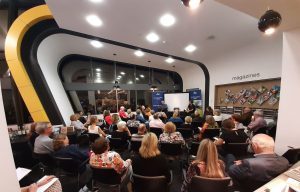 This week, not for the first time, I was a beneficiary (with many others) of excellent support from a local public library.
This week, not for the first time, I was a beneficiary (with many others) of excellent support from a local public library.
Too often we tend to undervalue these institutions. We all know, of course, that public libraries provide resources to serve the general information needs of their citizens. We assume that any literate society has plenty of them. We may be aware that free lending libraries in Australia date back to the mid-19th century. Since then they have become part of our taken-for-granted social environment.
It’s easy, if we don’t give the matter much thought, to regard them merely as storage facilities for printed publications, electronic data and archival materials. But along with those basic functions and various other valuable services, they also give direct support to writers and readers.
The example foremost in my mind is the generosity of the South Perth Library in regularly organising events that bring together an author and a crowd of potential readers to celebrate a new book.
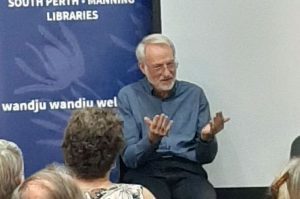 A couple of evenings ago it was my turn (once again) to have a novel launched in that congenial setting. It was part of the Library’s “Words with Wine” series. A large audience listened to local history librarian Anthony Styan interview me about The Madwoman’s Coat, my fifth work of historical fiction. His subtle and stimulating questions ensured that our conversation flowed well. Afterwards a good number of attendees lined up to buy copies of my book.
A couple of evenings ago it was my turn (once again) to have a novel launched in that congenial setting. It was part of the Library’s “Words with Wine” series. A large audience listened to local history librarian Anthony Styan interview me about The Madwoman’s Coat, my fifth work of historical fiction. His subtle and stimulating questions ensured that our conversation flowed well. Afterwards a good number of attendees lined up to buy copies of my book.
I’m grateful to Anthony, epitome of the Ideal Reader; to Tamara Lampard, the Events Officer, who did a great job of arranging the whole show; and to the dozens of people who came along to hear about (and purchase) The Madwoman’s Coat. On such occasions, all the hard slog of creating a book seems wonderfully worthwhile.
The post Let’s hear it for libraries appeared first on Reid on Writing.
March 8, 2021
“Go to another place”: artistry, insanity and more
The Madwoman’s Coat, my fifth historical novel, is now officially released! (There will be a launch event later in the month — details at the end of this post.)
For an author, publication brings elation — but also sheer relief that something so long in the making has at last found its way into print. Creating a novel is a protracted and painstaking process. Sentence by sentence, it’s all hard labour! I can feelingly echo the words of Graham Swift, author of Waterland: “Novels, in my experience, are slow in coming and once I’ve begun one I know I may have years of work ahead of me.”
While I hope this new book will appeal to any reader who has enjoyed my previous stories, it differs from them in some respects. For one thing, its action is seen almost entirely through the eyes of women. Female characters figure importantly in all of my novels, but until now they haven’t dominated the narrative point of view. How risky is this method for a male writer?
Advocates of identity politics argue that fiction based directly on an author’s personal experience is the only legitimate kind — that if one tries to convey an imagined perspective of someone very different from oneself, the writing may become inauthentic and potentially offensive. I readily acknowledge the sensitivities involved in such matters. Certainly some stories are “not mine to tell.” But where should we draw the line? If we think it’s inappropriate for a writer to enter imaginatively into the mind of anyone whose gender, ethnic background or other personal circumstances are unlike the writer’s, are we missing the very point of fiction?
To quote Graham Swift again:
The whole appeal, the whole challenge and reward of fiction, lies in its liberation from personal fact. The very least we should expect of it is that it will, to use the common phrase, ‘take us out of ourselves,’ take us out of the place we normally and sometimes narrowly inhabit.
For a writer of historical fiction, many potential challenges may be at least as hazardous as imagining the experiences of people whose gender or race differ from one’s own; e.g. —
I wasn’t alive in 1897, when The Madwoman’s Coat opens in Fremantle; so how can I know what it was like to live there at that time?I haven’t lived in Staffordshire or Wiltshire, where other parts of the story are set; so how can I render them authentically?Any artistry I could plausibly claim to possess is not of the kind practised by people at the heart of my story; so how can I depict their work with any confidence?Though I may be a bit crazy at times, I haven’t (yet) been locked up in an institution for people deemed insane, as some characters in this novel are, so how can I hope to convey genuine insights into their plight?I’m sure readers of The Madwoman’s Coat will be scrutinizing the story with many such questions in mind. But I take comfort from the words of Irish novelist Colum McCann:
Don’t write what you know, write toward what you want to know. Step out of your skin. Risk yourself. This opens up the world. Go to another place.
The book will be launched at a “Words with Wine” event at the South Perth Library (corner Sandgate and South streets) on the evening of Wednesday 31st March. All comers welcome but registration is necessary as numbers are constrained by social distancing requirements. To register, click here.
The post “Go to another place”: artistry, insanity and more appeared first on Reid on Writing.

